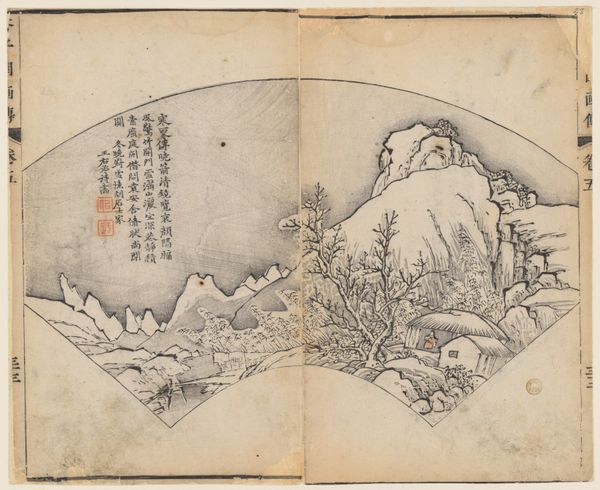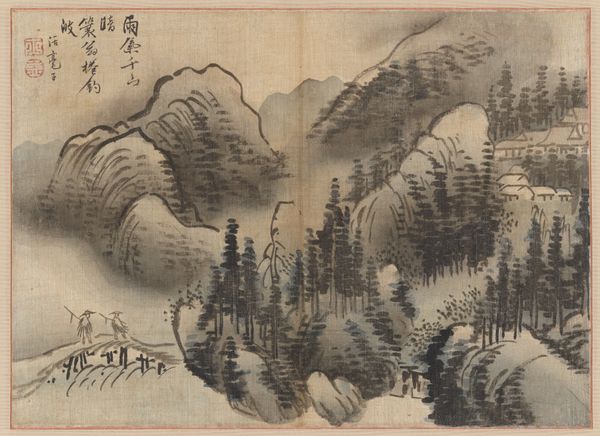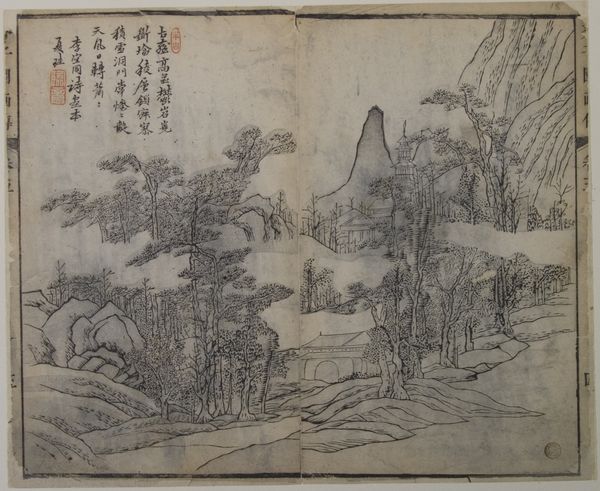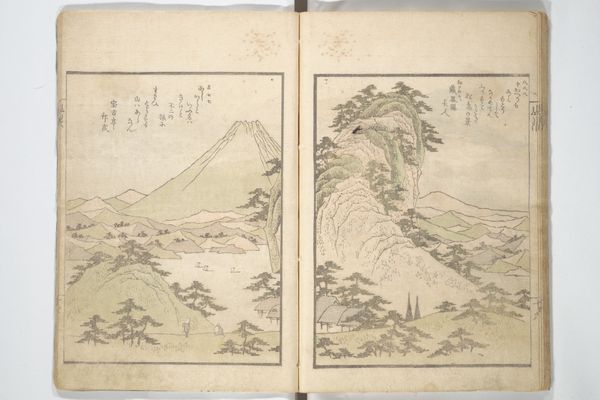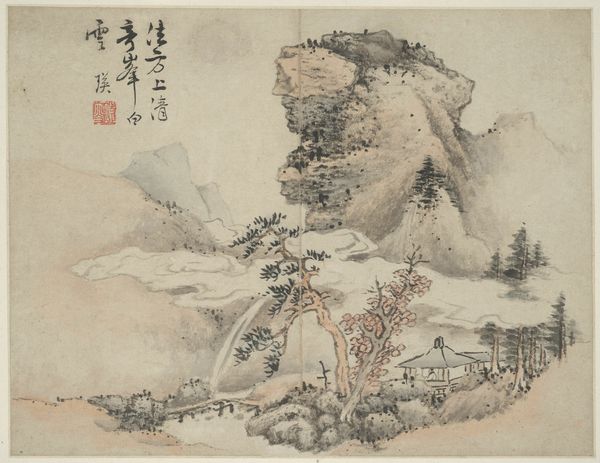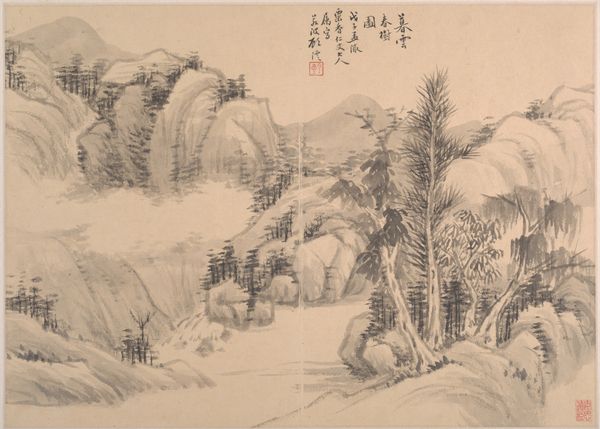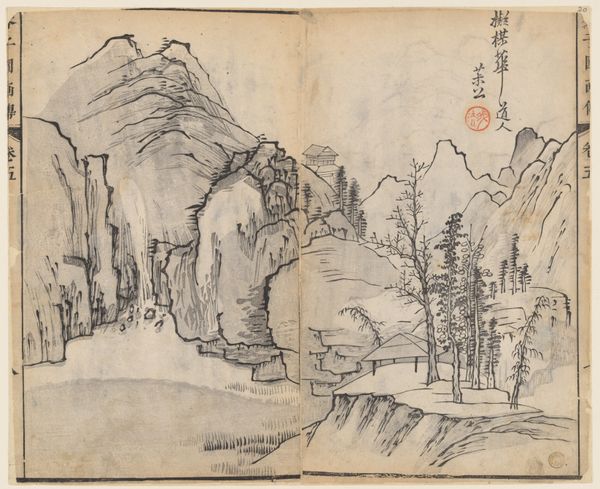
painting, print, ink, woodblock-print
#
painting
# print
#
asian-art
#
landscape
#
ink
#
woodblock-print
Dimensions: 9 5/8 x 11 13/16 in. (24.4 x 30 cm)
Copyright: Public Domain
Editor: We are looking at a page from *The Mustard Seed Garden Painting Manual*, crafted around 1679, and attributed to Wang Gai. It's a woodblock print featuring ink, residing at the Metropolitan Museum of Art. I find it incredibly delicate. The composition with layered shapes creates depth. What are your first impressions? Curator: The print exemplifies a formal engagement with traditional landscape painting. Note the strategic use of the void. How does the negative space contribute to the overall structure, in your opinion? Editor: I see how the varying ink densities around the mountains gives them an ethereal quality and really pushes them back. And because they aren’t fully described it kind of separates foreground from background? Curator: Precisely. The gradations are crucial. Let us also consider the compositional arrangement. We see a progression from the foreground elements, such as the meticulously rendered rocks and figures, to the more abstracted mountains in the background. Can you describe how line functions in the construction of form here? Editor: I see crisp, dark lines defining the trees and figures, contrasted with softer, blended lines suggesting the distant mountains. Curator: Indeed. These variations create both depth and a sense of atmosphere. Notice, too, the repetition of forms; the rounded shapes of the rocks echo those of the mountains, creating a visual rhythm. What effect do you think the artist intended with this structural choice? Editor: I think they might suggest the interconnectedness and harmony within nature. Curator: Yes. This structural mirroring promotes a balanced composition and underscores an aesthetic pursuit. Paying attention to internal formal relationships opens up the work. Editor: It really does. Thanks for pointing that out! I now view its balance and form so differently.
Comments
No comments
Be the first to comment and join the conversation on the ultimate creative platform.
